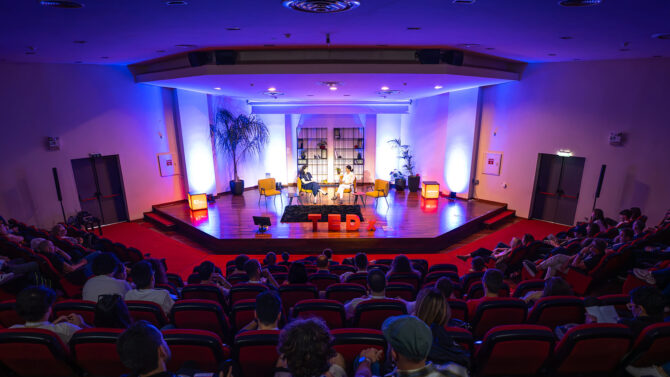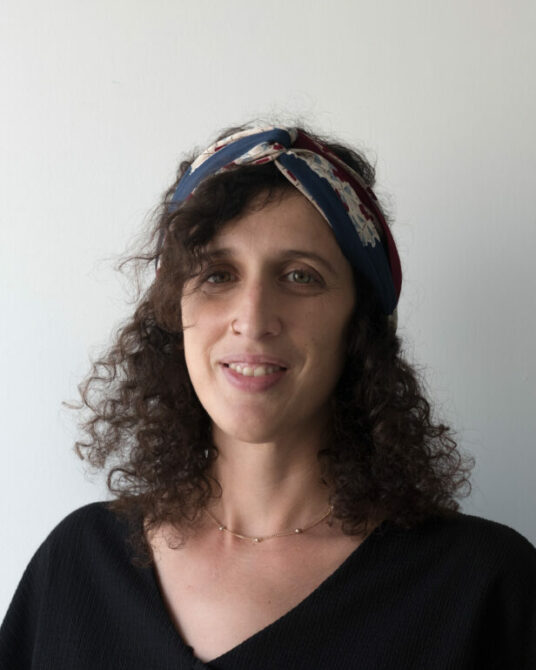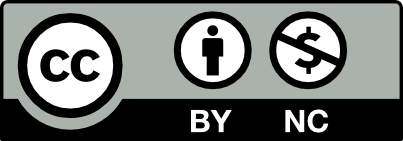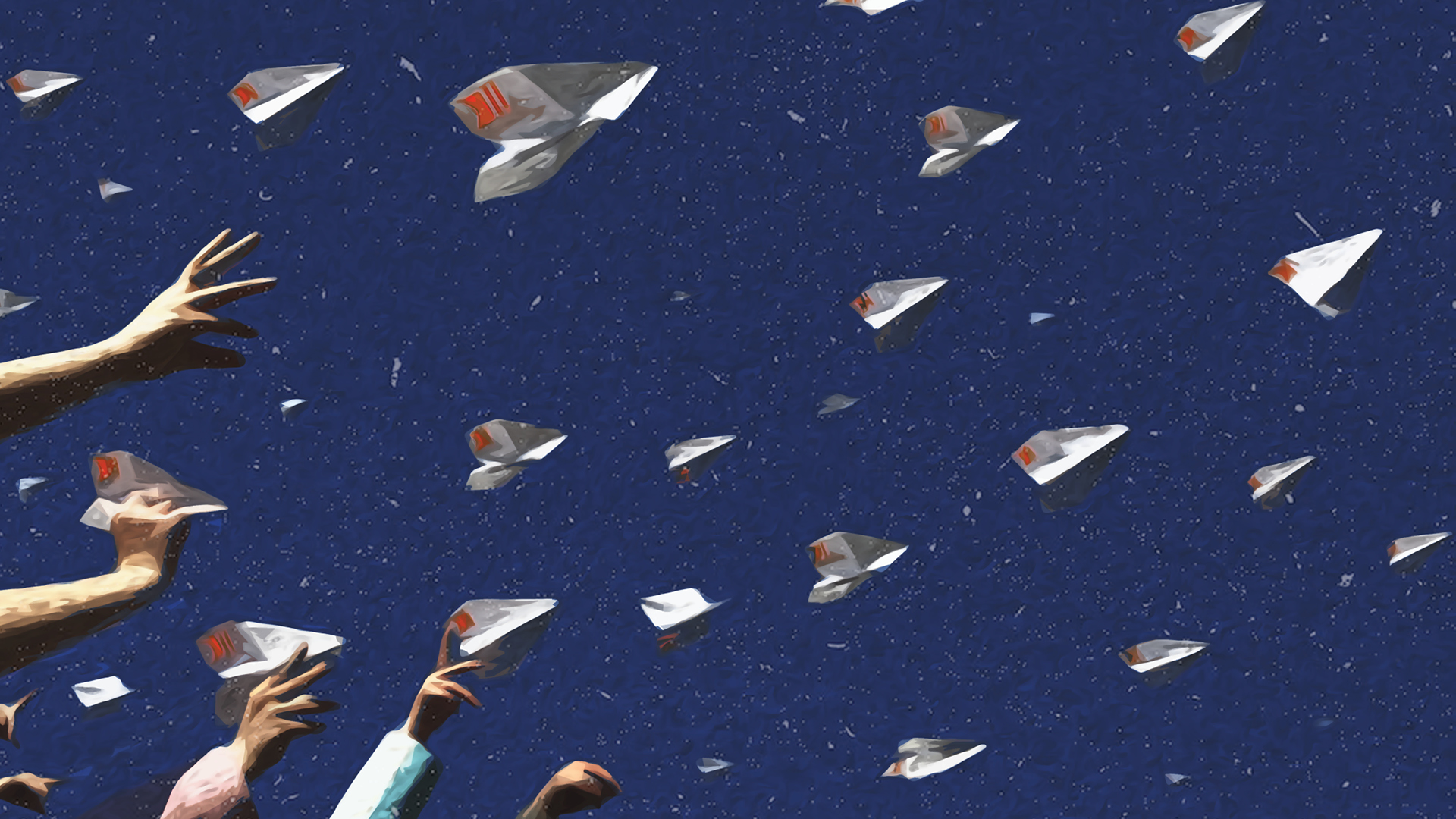For many journalists, Substack offers freedom and the prospect of financial sustainability, as well as the ability to build their own community. We spoke with journalists who write on the platform about why they turned to it, their expectations, its advantages and its pitfalls.
Translation: Evita Lykou
Illustration: Evgenios Kalofolias
How Young Audiences Are Reshaping the News

At TEDx Patras, Mitali Mukherjee highlighted the disconnect between news outlets and young audiences, urging efforts to rebuild trust.
Gabe Fleisher started his own independent newsletter, “Wake Up to Politics”, when he was just ten years old, with a single subscriber: his mother. In 2024, thirteen years after he started out and after he earned his degree in Political Science and Journalism from Georgetown University in Washington, he faced a dilemma: should he turn to the traditional media industry or remain independent? It was at that moment that he was approached by Substack’s team, who –as Fleisher himself says today– “were interested in, kind of bringing woke politics over” to the platform. Since then, “Wake Up to Politics” has been hosted on Substack, and Fleisher, who now has more than 60,000 followers, considers it a full-time job.
Moreover, the platform promises independence for publications and pays the creators.
“We believe that journalistic content has intrinsic value and that it doesn’t have to be given away for free. We believe that what you read matters,” wrote Substack co-founders Chris Best and Hamish McKenzie in July 2017. Their article, titled “A better future for news” was published on their then-new platform and addressed both journalists and the public: journalists write about topics that interest them, and readers receive content that they are interested in by making a small financial contribution, thus detaching the payment model from advertisements.
Today, in an era when an increasing number of professionals are launching their own publications, self-publishing is closely tied to the format of short newsletters that are sent directly to subscribers’ personal email inboxes. Meanwhile, eight years after its founding, Substack has become particularly popular in the journalistic world. One could say that self-publishing equals newsletter and Substack equals self-publishing.
How Substack works
Content published on Substack is usually long-form text. The platform allows users to publish additional content, such as podcasts and videos, as well as other accounts suggested by the content producer or “Writer”. The content is displayed either on the main page, increasingly reminiscent of the feed on any other social media platform, or sent to the user via email.
Anyone can use the platform for free. Nevertheless, when a Writer chooses to offer content through a subscription package, the platform retains a 10% share of the transaction. Substack itself communicates this relationship as “True Independence. Own all your content. Own your subscriber list. Build a community. Keep 90% of the revenue.” Of course, Writers have the option of providing free content exclusively, mixed content or subscription content exclusively.

Why self-publishing and why Substack?
Priti Patnaik is an investigative journalist who focuses on global health, based in Geneva, Switzerland, headquarters to the World Health Organization and more than 200 other health-related organizations. At the beginning of the pandemic in 2020, when Geneva was the epicenter of developments, she launched her own publication on Substack titled “Geneva Health Files”. What was once considered too “technical” for readers, according to Patnaik’s editors-in-chief, now concerned the entire planet. It was then that Patnaik decided to write freely about what she deemed important, rather than be dependent on the opinion of her editors-in-chief.
If you want to make an impact or make a change, you need to be consistent and really provide high-quality information, adhering to the highest journalistic standards.
Priti Patnaik
She began publishing her work on WordPress, but she knew from her years as a freelancer that she needed to find a financially viable model in the long term. This was also the reason she hadn’t tried to create her own publication earlier. “It was always very difficult to work independently, you know, having your own sort of publishing initiative,” Patnaik tells iMEdD. “Around 2016-2017, I was told that “oh, you need a board, you need funders”.” Substack, however, solved this problem. A few months after her first independent publication, she brought the Geneva Health Files to the platform, where they have been hosted for the past five years. Over time, the publication has amassed around 7,000 readers from around the world, and a significant portion of its revenue comes from Substack subscriptions. “At least independent journalists now have the option to monetize their journalistic expertise and develop their audience,” she adds.
Substack allowed Patnaik the freedom needed for editorial decisions, such as what to write and how to write it. “I was very clear about doing this on a consistent basis, to build a community and build a body of work. If you want to make an impact or make a change, you need to be consistent and really provide high-quality information, adhering to the highest journalistic standards. Being a freelancer [Editor’s note: in collaboration with other Media] would not have given this kind of space to decide what we want to publish without fear or favor.”

Editorial freedom is what keeps Fleisher on the platform. He wants to write in detail about topics that interest him, even if that means an article will evolve into a larger, long-term project. His recent analysis of U.S. President Donald Trump’s “Big Beautiful Bill”, was published in five parts in his newsletter.
The audience that’s there wants to read what I’m writing, and they’ve chosen to sign up for the newsletter because there’s some alignment.
Gabe Fleisher
“I hear from journalists of more mainstream publications: “I would love to be doing, you know, a piece like that, but my editors would never allow it.” They could never make it through, because they wouldn’t think that people would be interested, wouldn’t think it would get clicks”, Fleisher tells iMEdD and continues: “And I do think Substack has the power to kind of change a little bit of that incentive structure as there is kind of more of a self-selected audience. Obviously, it’s not as large an audience as in most mainstream newsrooms. But the audience that’s there wants to read what I’m writing [on “Wake Up to Politics”] and they’ve kind of chosen to sign up for the newsletter because there’s some alignment –not necessarily in beliefs, the newsletter is nonpartisan, but in interest. And that liberates you to say, “We’re gonna get really nerdy. We’re gonna get really in the weeds and do this kind of multi-part series that at a larger outlet might just seem too obscure.” But I am gonna do it, and we’re gonna go on this journey together. And people are really liking it and are really excited about it.”

Organizations such as the Global Investigative Journalism Network (GIJN), which (also) publishes on Substack, seek out this specialized audience. “Newsletters are becoming more sought after because there’s just so much information and so much content out there that it’s a bit difficult to keep track of everything. And, this way you can have more control and have a more personalized input of the type of information you want to receive and that is relevant to you,” says Joanna Demarco, Visuals & Newsletter Editor at GIJN. The organization maintains a large number of newsletters, each of which addresses important stories to the audience interested in them.
A year ago, they started publishing “How They Investigated” on Substack. “We thought Substack would be a good idea because, over the past two years, there have been shifts on social media […]. We noticed it had become a popular platform for newsletters within the journalism community,” notes Demarco.
Newsletters are becoming more sought after because there’s just so much information and so much content out there that it’s a bit difficult to keep track of everything.
Joanna Demarco
Indeed, many journalists now have their own different publications on the platform. For example, Ian Urbina and the multimedia and multidisciplinary The Outlaw Ocean Project are also present on Substack. Ryan Grim, along with Jeremy Scahill (co-founder of The Intercept) and Nausicaa Renner, have launched an independent investigative publication called DropSite News, hosted on the platform, which puts power, conflict and their intersection under the microscope. Other veteran journalists also self-publish on Substack, including Tina Brown, former editor-in-chief of Vanity Fair and The New Yorker among others, and –of course– the award-winning Seymour M. Hersh, for whom the 1970 Pulitzer Prize for his exposé of the My Lai massacre in Vietnam was just the beginning.
Social Media Can Support or Undermine Democracy – It Comes Down to How It’s Designed

The design of a social media platform is an invisible pilot that steers human behaviour. Most major platforms optimise their design with profit in mind, rather than community or democracy.
Editorial Cartooning: From Pen to AI (and back again)

Can a cartoon be “born” from an algorithm? If so, what does this mean for the future of satire and commentary? An AI researcher and four cartoonists speak to iMEdD. The latter explain why, after experimenting, they chose to leave it out of the picture —for now.
The controversial side of the platform
Despite its popularity, the platform has a series of controversial choices to its name. A simple web search for “Why I’m leaving Substack” yields posts from dozens of content creators on the platform –and not just journalists.
The biggest scandal occurred in November 2023 when The Atlantic published an investigation revealing racist and neo-Nazi newsletters. “Because the site takes a cut of subscription revenue, this meant that Substack was making money off extremists,” The Atlantic reported. In fact, when many writers on the platform requested that such publications not be hosted, Hamish McKenzie wrote in a blog post that censorship can cause greater harm.
Meanwhile, the platform began to resemble social media more and more, introducing features such as subscription suggestions, informational emails and Substack Notes, which look like tweets or threads. In mid-August 2025, Apple’s involvement as an intermediary in subscriber payments was revealed among the day’s news on Substack. This change will increase the amount users pay or reduce the share received by the respective writer. These incidents are causing more and more people to become skeptical of the platform. Many are turning to similar publishing platforms like Ghost and Beehiiv.
For small publications, such as Patnaik’s, all this must be constantly taken into account.
Ultimately, who are we “working” for and why are we staying?
Patnaik herself acknowledges that platforms like Substack are beneficial for journalists and that even if she wanted to, it would be difficult to build an entirely independent website: “It requires financial resources, time and hiring people dedicated to actually running a robust IT operation. So, it is not so simple to just move from a platform. You have to think about the interface of the newsletter, the payment gateway, the risks. You have to think about anything and everything that can potentially go wrong with hosting an independent media operation –the logistics of it, the technological aspect of it and also, you know, how and where it is hosted,” Patnaik explains to iMEdD.
Although subscriptions to the newsletter make up a large part of Geneva Health Files’ revenue, they are not the only source of funding. At the same time, Patnaik states: “I must also say that they are expensive. So, we are constantly assessing from a commercial perspective what it means to be on Substack. We are thinking these things carefully, especially because we have already been here for five years and have built an audience. Does it make business sense to be on a platform –every media entrepreneur has to be conscious of this choice […].”
When I’m writing, I’m sending something right into people’s inboxes. It’s right next to emails from their friends, from their family, from their coworkers […] they feel like they’re not just reading some impersonal thing they don’t understand.
Gabe Fleisher
Ultimately, self-publishing platforms, such as Substack, are a “necessary evil” for journalists. Ease of use and the subscription model allow media professionals to focus on the topics that interest them, build their audience and earn its trust on their own, in a way that offers the prospect of financial sustainability. It reminds us of the old relationship between readers and newspapers, which, as the 2025 Reuters Digital News Report mentions, large organizations have lost. For Fleisher this relationship is important: “When I’m writing, I’m sending something right into people’s inboxes. It’s right next to emails from their friends, from their family, from their coworkers,” he says and adds: “I think readers, once they build it as part of their routine, they feel like they’re not just reading some impersonal thing they don’t understand. They’re having their cup of coffee and reading what Gabe has to say this morning. And this builds these kinds of routines and connections that lead to loyalty and trust, which is obviously something a lot of organizations, I think, are struggling with.”

